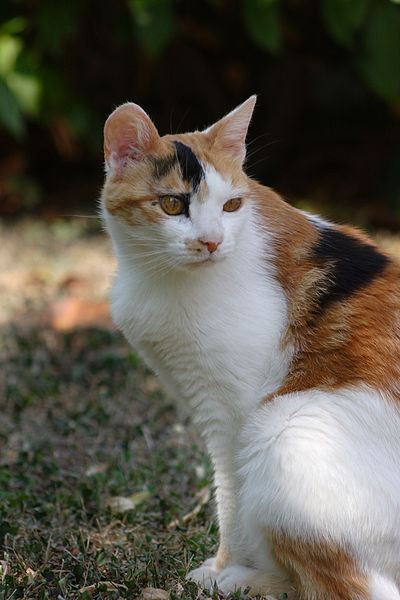
Did you ever wonder what was behind the stereotype of black cats being evil or unlucky now that we have passed the Halloween season? Or if there was a real reason why black cats might be adopted less from shelters than other cats? A recent study by researchers at California State University and the New College of Florida explored where these biases originate by using an Internet-based study of about 200 individuals. The survey used a 7-point scale to assign 10 terms (active, aloof, bold, calm, friendly, intolerant, shy, stubborn, tolerant, and trainable) to five different colors of cats (orange, tri-color, white, black, and bi-color). Significant differences were found in that people tended to assign “friendliness” to orange cats, “intolerance” to tricolored cats, and “aloofness” to white and tricolored cats. “Stubbornness” was not assigned in any color of cats.
White cats were considered less bold and active and more shy and calm than other colors. Orange cats were also considered more trainable than white cats. There was a glimmer of hope from the survey in that respondents placed more importance on personality than color when they selected a cat companion, though some evidence shows they believe the two qualities are linked. The study’s information will be beneficial for shelters and those in cat rescue to help promote adoption of different color cats, how to educate potential adopters, and how to avoid relinquishment of some cats due to coat color bias. [VT]
See also: McConnell AR, Brown CM, Shoda TM, Stayton LE and Martin CE. Friends with benefits: on the positive consequences of pet ownership. J Pers Soc Psychol. 2011; 101: 1239-52.
Related blog articles:
How the tabby cat got its stripes (October 2012)
More on cat health:
Winn Feline Foundation Library
Find us on Facebook
Follow us on Twitter
Join us on Google+
No comments:
Post a Comment